|
I participated in a No Kill in Motion panel discussion recently about the subject of appointment-only hours for animal shelters. During the early months of the pandemic, some shelters closed entirely. Others went to appointment-only interaction with the public. Using appointments made perfect sense for a while as we all adjusted to what we now refer to as “public safety measures” to keep people safe and try to limit the spread of the Covid virus. Some shelters split their staffing into teams to limit the number of staff in the building at any given time. This also made sense – if someone on Team A got sick, the shelter would only need to test and quarantine those team members, limiting the negative affects on the shelter operation. With the country back open for business, some shelters have continued their appointment-only hours. The members of the panel were not in complete agreement regarding why this is a bad idea, but we all agreed that only seeing people by appointment creates barriers to add to the barriers which already exist related to animal adoptions. As Nathan Winograd wrote about years ago when he said “good homes need not apply,” some organizations make it so difficult to adopt animals that really good people end up being turned away for reasons which have very little to do with their decision to bring an animal into their home and their commitment to care for that animal. Work more than 40 hours a week? No, you cannot adopt. Travel for work? No, you cannot adopt. Have children in your house? No, you cannot adopt. Over the age of 50? No, you cannot adopt. The list goes on and on including one which would have precluded my family from adopting years ago – lack of a fully fenced yard. Companions and Animals for Reform and Equity (CARE) did a great video about this very subject recently which I share often. Some people get so frustrated by the extraordinary lengths they must go to trying to adopt a shelter or rescue animal that they give up and end up getting a new pet from a breeder. The problem was recently covered in an article in the New York Times entitled, "Want to Adopt a Pet? Prepare for a Full Background Check." Shelters are at their very core customer service and marketing organizations. Yes, they exist for reasons of public safety but now are increasingly expected to balance public safety with animal welfare because that is what the public demands. Any shelter which only interacts with the public by appointment is seriously limiting its ability to help people reclaim animals or help people adopt new animals. There is nothing at all wrong with having appointments for people who seek pet surrender counseling to talk to them about alternatives to surrender or people who want to talk about some issues they are having to get help to overcome those issues. But requiring appointments for people to try to reclaim a pet or even adopt a pet serves to create more barriers to a process that many people already find daunting. The issue of shelter hours came up just this week in my own area related to the municipal animal shelter in the city where I work so I will take this subject one step further. Shelters that do not require appointments, but which are only open to the public when people are at work also create tremendous barriers. Not everyone works from 9:00 a.m. to 5:00 p.m. but many people do. If the shelter is only open during hours when people work, how are they supposed to get to the shelter to reclaim a lost pet or adopt a new one? It is almost impossible unless that person takes vacation time from work, provided they have a job which even provides them with vacation time at all. Let’s say someone’s cat is missing and they know from looking at the shelter website that their cat is there. The shelter is only open from 9:00 to 5:00 when they are at work. Even if that person gets a one-hour break for lunch, it takes time to drive to the shelter, go through the process to reclaim their pet, get their pet back home and then get back to work. I challenge even the person who lives closest to a shelter and works close by to accomplish all those tasks in an hour. Adopting an animal takes even longer. People should feel free to look around at the available animals without someone following them around like an aggressive used car salesman (no offense intended to used car salesmen; this is a statement about people who hover), should be able to spend time with animals they are interested in, ask questions, etc. It is not possible to do that during a lunch break, get the animal home and help that animal begin the shelter decompression process. The only way someone could either reclaim an animal or adopt an animal in the scenarios above would be to take vacation time, if that is even available to them. I have heard some people say that running the shelter by appointment only is less stressful for the animals and staff because there are not as many people wandering around. As Shirley Marsh of Yes Biscuit said during our discussion, getting those animals out of the shelter by having them adopted or fostered is also less stressful. Animal shelters that are open until at least 6:00 p.m. or even 7:00 p.m. make it much easier for people to come to the shelter after leaving work and then go home from the shelter with their reclaimed pet or new pet. Shelters with weekend hours make it even easier to reclaim or adopt a pet. As one shelter director in Florida told me, “we’re in the building on the weekend anyway, so it made perfect sense to make it easier for people to get here.” Exactly. If you run an animal shelter and are only open by appointment or only open when most people are at work, please take a good look at what you want to accomplish. Having different hours doesn’t mean being open more hours. It means being open hours which make animals accessible to the public you serve so that you can help get more animals out of your building and either back home where they belong or into new homes. If you really only want to work from 9:00 to 5:00, you are in the wrong business. (image of animal control officer with dogs courtesy of the Lake County Florida Animal Shelter)
0 Comments
After we lost Aspy to cancer in 2016, my sister got me a memorial bracelet made out of white magnesite beads. It has a pawprint bead and a silver heart bead. I wore it all the time as a way to deal with my grief and keep Aspy close to me in spirit. That may not make much sense if you have not lost a beloved pet; it just helped me to have something with me to represent our bond. Our loss of him was tragic and not at all on the terms we had hoped for. I wore the bracelet so much that the stretch cord finally got a little loose so I decided to fix it. It turned out to be pretty simple, just some stretch cord and some craft glue. Which led to my thought that went something like, "hey. I could make these." And so I do. I have my own selection of what I call Rescue Bracelets I wear often. I make them for friends and for people I know who have suffered a loss similar to ours. I began doing small fundraisers to benefit shelters and nonprofit organizations a few years ago. None are big money makers or game changers; they are just a way to bring attention to small groups and keep them in the public eye while helping with marketing through the sale of items. A lot of people like to help an organization and having something to show for having done so. I originally focused on t-shirt fundraisers with Bonfire because they are easy to manage, Bonfire makes great shirts and the production is based in the United States (Virginia). My other go-to events now are the shirt campaigns and Rescue Bracelet Facebook auctions to benefit nonprofits. Beading is a creative outlet that is cathartic for me. If you'd like to support the current bracelet fundraiser to benefit House of Little Dogs, Inc., the photo album for the Facebook auction is here. Bidding ends on Sunday, March 21, 2021, at 5:00 p.m. central time. Any amount you pay over the value of your purchase is tax-deductible (although you need to keep your receipt for your tax purposes). To learn more about the wonderful work done at House of Little Dogs, please visit the website. They do wonderful work helping small dogs with medical and behavioral issues, most of whom come from animal shelters where they would otherwise be destroyed. Our video about House of Little Dogs (thanks to David Hodges, Jason Mraz, Lucas Keller at Milk & Honey and Terra Simon at Kobalt Music) is below. Enjoy. If you lead or volunteer for a shelter or nonprofit organization, I highly recommend both Bonfire shirt drives and some form of auction on Facebook or another platform. Shirts and bracelets are both wearable conversation starters without having to say a word.
Something remarkable happened this week in the midst of the unprecedented times in which we live due to the pandemic, political unrest, social injustice and much uncertainty: a shelter dog moved into the White House. I realize this is not particularly important to many people who are struggling and perhaps it should not be. As I find my way through this time with my family, I admit that I am always looking for the positive. For something to remind me that normal life is still going on in some ways and that there is good in the world. The fact that “Major” Biden now lives at 1600 Pennsylvania Avenue may not seem like a big deal to many people. There have been animals in the White House before. The reason this is so important is because of the message it sends to the public. That animals rescued from animal shelters are beloved family members who enrich our lives in so very many ways. That they are worthy of our time and our attention. That they are individuals like all of us who have the capacity for love and joy and humor if only given the chance. I know that not everyone gets their pets from shelters and rescue groups. I just wish that they would. As long as we have animals who are destroyed in our nation’s shelters using our money, shouldn’t that be the first place we look when we decide to bring a new companion animal into our lives? I would like to think so. I feel this way because I was raised with animals who were rescued or came from shelters. For me, it’s just the right and ethical thing to do. But that’s not all there is to my position. We consider ours an animal friendly country where we “root for the underdog.” I don’t think we can claim that moral high ground as long as we continue to allow breeding of millions of animals every year, often in operations that are criminal, while at the same time destroying millions of animals a year. Our actions should speak as loudly as our words if not more loudly. I would also like to think that outdated and unnecessary act of destroying healthy and treatable animals in our nation’s shelters will end during my lifetime. I know that some people will never get a companion animal from any source other than a breeder. I can live with that, provided we find a way to apply standards to commercial breeding operations for the safety of the public and the welfare of the animals bred there. And provided we stop producing them by the millions only to destroy them by the millions. Sales of dogs and cats in stores must end. It may have been the norm decades ago, but attitudes have changed about companion animals in our culture. Time will tell whether that happens because people no longer buy dogs and cats in stores – realizing that they are perpetuating the animal abuse and neglect we all abhor - or whether that happens because it is no longer profitable to mass produce dogs and cats for transport and sale nationally because of standards which are not only written but which are enforced. When I was in the Army, there was a phrase used regularly within the ranks and up and down the chain of command: lead by example. In this case, the Biden family is leading by example. They are demonstrating their values through their behavior. My hope is that people will see that behavior and perhaps reconsider their own behavior the next time they decide to bring a companion animal home. There are plenty of animals in need of homes across our country who are easily found at local animal shelters, with local rescue groups, or using websites like Petfinder or Adopt-A-Pet. Welcome to the White House, Major. Take good care of your friend, Champ, and take care of the rest of your family. They need you. (photos of Major at the shelter courtesy of the Delaware Humane Association; photos of Major and Champ at the White House courtesy of the White House).
I’ve never really understood the concept of buying a pet from a breeder through a website. I guess part of that is because I promote adoption of animals from shelters and rescue groups as a first option. To me, it just seems like the right thing to do on a personal level and from a point of being responsible. As a nation, we continue to destroy healthy and treatable animals in our shelters using tax-dollars even though we have more than enough homes for all of them. These are animals who either were, our could have been, someone’s beloved pet. I see it as our collective responsibility to stop the needless death from happening through adoption as a first option. I fully recognize that some people will never adopt from a shelter or a rescue group and insist on getting a pet from a breeder. But from a website? Really? Online shopping is a great resource in many ways. Even prior to the pandemic, more and more people turned to their electronic devices to shop that ever before because it's easy and convenient. The pandemic has supercharged a transition away from brick and mortar shopping to online sales which have soared as people do all they can to keep themselves and their families safe while limiting (or completely ending) in-store purchases. I've heard some experts say the retail industry as we have known it is forever changed and there is likely no going back. But a pet? It just seems sordid to me. Online shopping for things is great. Online shopping for a living, breathing, sentient creature who will be part of your life for at least a decade and maybe two is just not right in my book. I know people do it all the time for a host of reasons and it may relate back to that easy and convenient mindset. They’re looking for a companion animal, find a website (or a bunch of websites) that look polished on which images of cute puppies or kittens are just too hard to resist and read that the animal comes fully vetted and with a health guarantee. What could possibly go wrong? Everything. Many animal advocates are quick to preach, “don’t breed or buy while shelter dogs die.” That’s a nice idea in theory, but it doesn’t work in reality, at least at this time in our society. There will always be people who want to get a pet from a breeder and since breeding animals is legal, there is nothing to be done to stop it. Some breeders breed dogs specifically to be placed in service industries. Others breed dogs to perform law enforcement functions. Some breeders make big money from breeding animals; I’ve seen some puppies who cost thousands of dollars. Some breeders make hardly any money at all and do it for the love of the species or love of the breed. I know there are breeders who function responsibly, who care deeply for their animals, who provide their animals with all they need – veterinary care, exercise, socialization and even training – and who work hard to place animals in great homes, insisting the animal be returned to them if something goes wrong. Then there are the other breeders. The people who insist they meet you in a Walmart parking lot or never even meet you at all. The people who will not let you see the conditions in which the animals are bred, coming up with any variety of excuses as to why you can’t see the location for yourself to judge how the breeder dogs are cared for. It is this group of people who ordinarily broker their animals to stores to be sold to the public in a retail setting or who develop inviting looking websites with wonderful images and testimonials to lure you into the sale. I’ve seen numerous sites like this over the years and am always amazed at how much the animals cost and the process used to buy one. Some require a nonrefundable deposit before you meet the animal. Some want full payment before a dog is shipped to you. I’ve often wished there was some “truth in advertising” requirement for online sale of pets so photos of the conditions in which the dogs live are posted next to the photo of the cute animal, cuddled up next to a teddy bear. Maybe that would cause people to be repulsed enough to reconsider their decision. Which leads to the point of this blog. Pet scams are now more prevalent than at any time in history as people spend more time at home or spend more time separated from people and are looking for companionship. I heard a few months ago that the pandemic has led to a sharp rise in complaints about pet scams. I was reminded of this again today when I heard about a heartbreaking story on CBS This Morning about a woman whose young daughter had died and who decided to buy a dog from a website in her daughter’s honor (her daughter always wanted a puppy), only to be scammed out of the money she paid for the dog. This led me to look at the Better Business Bureau News page about “puppy scams” which have soared during the pandemic. The numbers are astounding. The BBB reports that the biggest increase in online shopping fraud is pet scams which have more than tripled from last year. They make up 24% of online scams reported to the BBB and are now considered the riskiest scam according to the BBB Risk Index. Of the people targeted by the scam, 70% end up losing money with the typical amount lost of $700. And, of course, the BBB reports that not only are these the riskiest of scams, they are also one of the most heart-breaking. The BBB news story states: Some families turned to the internet to look for a pet, thinking a pandemic puppy or kitten would help ease some of the uncertainty of current events. Many have come across scammers advertising animals that don't exist and are never shipped. The coronavirus (COVID-19) pandemic has given scammers the idea to ask for money up front, or to make excuses as to why buyers can’t see the pet in person-- before heartbroken, would-be pet owners figure out they have been conned. This practice has also lead to a jump in online shopping fraud in general. BBB suggests, be aware of these pet scams and avoid falling for phony websites." When it comes to buying animals online, please. Just say no. It you’re determined to get an animal from a breeder, find a reputable breeder close to you or who has been recommended to you by someone you know. Meet the breeder in person, see where your new pet will come from and ask for both veterinary references and references from people who have bought a pet from the breeder in the last year.
Better yet, open your home to an animal from an animal shelter or rescue group. If you’d like to use the Internet to help with that, there are wonderful websites like Petfinder or Adopt A Pet where you can search for animals by species, breed, size and age by geographic area. You can also visit your local animal shelter in person to see the animals available for adoption or learn about animals in foster homes who are ready to be adopted. You can also visit the websites and Facebook pages for animal shelters and rescue groups in your region to see what animals are available to find the right fit for you and your lifestyle. When you adopt from a shelter or a rescue, you enhance your own life, save the life of the animal you adopt and make room for another animal in need. I feel terribly for the woman who was scammed trying to honor the life of her daughter. I am sure she is devistated. I wish I knew her so I could help her find a puppy from a shelter or a rescue group instead. (Aspy next to the 9th green at the Twin Lakes Golf Course, watching Rich putt) The 4th of July is a day of celebration for many people. I know that it should be for me, but it honestly is not. The 4th of July is the day that we mark the passing of our senior dog, Aspy, under what I consider traumatic circumstances. Much like we involuntarily mark the dates of the people we love who have left this Earth, we do the same with our beloved companion animals. We do our very best to focus on lives well-lived and be thankful for the number of years we shared walking a path together. That is what I will try to do on July 4th. It will be bittersweet as I do my very best to force away the memories of our dog's last day with us. As I've written about before both of my website and in my book, I became an animal welfare advocate when I learned what was happening at my local animal shelter and in the wake of another personal loss. It is abundantly clear to me that using the word euthanasia to describe the destruction of healthy and treatable shelter animals is entirely misplaced. Making a decision to euthanize a beloved animal has nothing whatsoever in common with decisions made in shelters every day to end the lives of animals who were, or could have been, someone's beloved companion. But back to the subject of euthanasia of beloved companions. Anyone who has ever made what Marian Hale once called "That Terrible Decision" regarding a companion animal is torn with having made that decision. We are plagued by doubts about timing. Did I wait long enough? Did I wait too long? Did I allow my selfish love and need for that animal to cloud my thinking? Did I really put the welfare of my beloved companion first? Could I have done more? I've come to believe that when the decision to euthanize an animal is made from a place of love, it is always the right time, because it will never be the perfect time. We do our very best with the information available to us and once the act is done and our companion no longer shares our lives with us here, we have to forgive ourselves. I know that's easier said than done and I struggle with the decisions we have made regarding our own beloved pets throughout the years. It is easy to look back and say that we waited too long with Snake and we kept her around for us and not for her. It is easy to say that we waited too long for Aspy. That we likely should have let him go after he had his stroke in the summer of 2015. But he had so many good and happy days after his stroke that I choose to focus on those extra months he had. He was fiercely loved. He was a member of our family. We did and would have done anything for him. And in the end, that caused just to make the decisions that we did. While others are celebrating on the 4th of July we will be experiencing our day of remembrance. Love your companion animals for as long as they are with you no matter how poorly they behave or may frustrate you at times. They have the cognitive function of children and they do not act with malice. If you believe your pet is suffering or his or her quality of life has diminished so greatly that you are wondering if it is time to let them go, please consult with your veterinarian. Euthanizing pets is very difficult for them; they are attached to the faces they have cared for over a period of years. But they have a degree of objectivity based on their education that we lack because we are thinking with our hearts. When your beloved companions are gone, you will find yourself wishing you had just one more day with them. That is natural. But likely not what they need from you. One more day, one more time One more sunset, maybe I'd be satisfied But then again, I know what it would do Leave me wishing still for one more day with you. (our annual memorial trip to the places Aspy loved; next to the 9th green at the Twin Lakes Golf Course) ("One More Day" by Diamond Rio)
April 22nd is Earth Day. A day celebrated around the world to demonstrate support for environmental protection which was first celebrated in 1970. In our household, it is a day of remembrance as we recall the passing of our beloved dog, Snake. My husband, Rich, rescued Snake in 1992 with the help of the Lassen County Game Warden in Northern California. She was a German Shepherd/coyote mix dog who spent the first two years of her life chained to a tree with a heavy logging chain. The the only way to save her was an adopter who was experienced with dog behavior and trauma. It took time to take her from a dog who “pancaked” and did not trust people to a dog who was confident and loyal. Snake was a sight to behold. She looked like a German Shepherd in the body of a coyote, all muscle and heart. She was incredibly smart and a true athlete. She lived to chase a Frisbee, jumping and twisting in the air to catch her toy. She was very protective of us, and we were always careful with her around other dogs and other people; she was part domestic dog and part wild child. Snake had been declining for years and we knew the day would come when we would have to make the decision that was worst for us, but best for her. She had become trapped in a body that no longer functioned well. She had trouble digesting food, was intermittently incontinent and had mobility issues. When she began to have cognitive issues in addition to her physical issues, we knew it was time. On a sunny Saturday morning in 2006, Rich called our veterinarian and asked her to come to the house. This was something we had arranged months in advance, but we did not make the decision until that morning. I took her for one last walk as I tried to hide my anguish. I worried she would feed off my emotions and be scared. It was a beautiful day, and she seemed to be feeling pretty good, but we knew it was time if we were to save her from suffering and pain. We didn’t realize until later that it was Earth Day. We buried her on our rural property (we called it Snakehaven) in a breathtaking casket Rich had been quietly building for months. (We were later forced to move thanks to a shooting range which opened near our home; Rich undertook the heart wrenching task of recovering Snake's remains so that we could have them cremated to take the with us to our new home.) Even when we know ahead of time that the ones we love are going to leave us, dealing with that loss is another matter entirely. The void left by the absence of someone you have lived with for so long is both striking and shocking. We told ourselves Snake had a long and wonderful life because those things were true. Having her euthanized was one of the hardest things we had ever done, and so we struggled with the decision. Did we let her go too soon? Had we waited for too long? We agonized over our decision for days, weeks and months.
I've had numerous conversations with people in the last 14 years about the decision to euthanize a beloved pet. Marion Hale once aptly described it as The Terrible Decision. It is difficult enough to lose someone you love to tragedy or under natural circumstances. Losing someone by choice for their benefit to either prevent or alleviate suffering is another matter entirely. We anguish over timing. Should we wait? Is it too soon? We tell ourselves that today was bad, but maybe tomorrow will be better. Sometimes that proves to be true. Other times it does not. I have come to believe that there is just no good time to say farewell. It is an imperfect process which is clouded by love, compassion, memories and hope. It can be hard to think clearly as we try to force ourselves to choose what we hope is the "right" time. There is such thing in any absolute sense. Any time a decision is made to euthanize an animal for reasons of mercy, that decision is right because it is made from a place of love and sacrifice. It is putting aside our own selfishness and making the selfless decision to let the soul we love go as peacefully as possible. When the time comes for you to say farewell to your beloved pet, I know that you too will do so from a place of love. Make your best decision based on the information you have about quality of life and once the deed is done, forgive yourself. The passage of time may not heal all wounds. Grief does become less painful in time as you shift from focusing on the void left and you focus more on positive memories, giving thanks for the time you walked a path together. Our companion animals speak with us through body language and behavior. If they could talk, I feel confident they would tell us what they want and they would say, "please. It is time to let me go. If you love me, give me wings." We love you, Snakey. Run wild and free. May we meet again some day. I published a blog on Wednesday of this week about our COVID 19 public crisis and what animal shelters can do to reduce intake of animals into shelters and increase output of animals from shelters. The impetus for the blog was a call I had with a contact of mine who asked what I knew about rumors that some shelters were resorting to population control killing. I used the blog to again promote the programs and services of the No Kill Equation while highlighting some great things being done by shelters to help animals. Today let's talk about the rest of us. About those of us who share our lives with companion animals. The choices we make regarding our pets which are reflected in our personal behavior are more important now than ever before when it comes to keeping animals alive - not just our own animals, but the animals in our communities. I realize that many people don't give a whole lot of thought to how their personal choices affect how animal shelters operate. What we do as individuals absolutely affects shelters either for good or for bad. Keep Your Dogs Contained Most places have laws that require animals, particularly dogs, be contained so they do not run at large. Now is the time to take extraordinary measures to keep your pets under your control. Do not let your dogs run loose like it is 1845. It is not only dangerous for your dog, but it can be dangerous for the people who encounter your dog whether they are driving or just happen to cross paths. Make sure you keep gates closed, keep doors closed and you teach your children to do the same. If your dog gets loose, he or she is not only apt to be injured, but is apt to end up in a local animal control system. Do your part to keep that from happening not only to reduce the number of dogs in local shelters, but to avoid putting the life of your dog at risk. Your dog who is well behaved at home may do very poorly in a shelter environment and that may lead to his or her death. Make Sure Your Pets Can be Identified Now is the time to have your pet microchipped so he or she can be identified. Chipping is a cheap, easy way to help shelters, veterinary offices and law enforcement authorities know your pet's identity to get them back to you quickly if they do get loose or even if they are stolen. If you are on a Stay at Home Order and cannot get to a veterinary office, you can order an identification tag or collar for your pet so that someone who finds them can contact you easily. For cats, breakaway collars are recommended to avoid strangulation. Identify a Pet Parent I have written about the concept of a Pet Parent before. Much like some people name a Godparent for a child, a Pet Parent is someone who has agreed to take your pet or pets for you in the event of your death, hospitalization or if you can no longer care for them for some reason. Please do not assume that your family members or friends will automatically take your pets and care for them as you do in the event the unthinkable happens. Have an actual conversation with a family member or friend to ensure not only that they commit to take your pets, but that they know how to get to them in your absence and how to care for them. Our Pet Parent is one of my cousins. She has information about pet history, veterinary contacts, local contacts to get into our home and we have made provisions for the costs of care in the event of our deaths. No one likes to think of the worst case scenario, but it is the responsible thing to do. Related to COVID 19, you also need a Pet Parent for short-term housing and care. Think of this as a foster for your pet who will care for your pet temporarily until you have recovered and can care for your pet yourself. Don't allow your pet to end up in your local animal shelter because you didn't have a plan in place. Pet Supplies - Be Ready In the middle of shopping for the human members of your family by having a supply of food to last for a while, don't forget your pets. Make sure you have enough pet food to last a while. Make sure you have your pet's medications refilled and documented with dosages and administering directions. Have a crate and extra supplies on hand if you need to relocate your pets quickly. Keep all animal vaccines up to date and have copies of those records available in the event that boarding becomes necessary. Help Local Animal Shelters There are a host of ways you can help your local animal shelter during this crisis provided you are not under a Shelter at Home Order. You can foster an animal to get him or her out of the shelter and help expedite the adoption process. Many shelters offer sleepover fosters, weekend fosters, or other short-term fosters which not only frees up shelter space, but also helps the shelter to learn about the true personality of the animal. Very few dogs and cats behave in shelters the same way they behave in a home environment. When you foster, you learn about the ability of the animal to ride in a vehicle, get along with other animals, get along with children and about their personalities in general. That information, along with photos and video clips can be used by the shelter to help place the animal in a new home. It's much easier to "market" animals to new homes when more is known about who they really are, beyond what we see. Now is also a wonderful time to adopt a shelter animal. Adopting a new-to-you pet now gives you a wonderful opportunity to help your adopted shelter animal decompress, learn about structure and become a member of your family. It can be hard to do that when working your normal hours at an office. Extra time at home makes the process easier for you and for your new pet.
You can also donate to your local animal shelter to help during the crisis. Some shelters may need food, blankets, beds, or enrichment items like Kongs and treats to keep shelter animals occupied during their shelter stay. Contact your local animal shelter to find out what they may need; many shelter have Facebook pages where they regularly list items they need donated. Donate to a Local Pet Food Bank Even if you have plenty of pet food on hand, others may not. If there is an organization in your community which operates a pet food bank, please consider donating so you can help another person keep their pet during difficult financial times. Many people are losing their jobs and may think they have to surrender their pet to a shelter because they can no longer afford to feed him or her. Many pet food banks taken open bags or boxes of food. No donation amount is too small. If you are not sure if your community has a pet food bank, your local animal shelter or local rescue groups should be able to tell you about places to donate food. It is obvious that our nation is in a state of crisis. The news of the COVID 19 pandemic is all around us. We’re all doing our best to get through this period together while changing our personal behavior to reduce the loss of life. The situation is evolving so rapidly that it’s enough to cause all of us to feel ill to some degree as we try to keep up. Stress levels are high. The pandemic affects every aspect of our daily lives and those effects extend to places we might not have expected. I got an email from an author contact of mine this morning, Cara Sue Achterberg, wondering what we can to about reports we are hearing that some animal shelters plan to destroy their entire populations of animals in anticipation that they will not be able to manage the intake of animals. I’ve seen posts on social media to the same effect. I’m honestly not sure how pervasive this “mass killing” problem really is on a national level. I've also read about people surrendering pets to shelters because they fear they can get COVID 19 from an animal. The information from the CDC about that rumor is here. Yes, this is a time of crisis. That’s the bad news. But there’s good news. Now is the perfect time to makes changes in the culture in our animal shelters and our communities to keep animals alive. We know how to reduce shelter intake. We know how to increase shelter output. The methods have been know for years. We do those things using the programs and services of the No Kill Equation which was developed by Nathan Winograd and about which I have written many times. Foster Programs Foster programs get animals out of shelters quickly. Many people are working from home. This is a great time for people to foster a shelter pet not only to free up shelter space, but to help the animal get adopted faster. Most animals behave completely differently in a home than they do inside a shelter, so fostering provides a great opportunity to learn more about them and to help them decompress. Photographs, video clips and information about the animals are then used for marketing purposes. I saw a Facebook post just this morning about the Kern County Animal Shelter which is doing drive-up foster pick up of animals to free up shelter space. (image courtesy of the Kern County Animal Services) Adoption Programs Promoting adoption of animals is always important, but now it is critically important. Shelters can use the media and social media to let the public know how to adopt an animal and what animals are available using adoption specials and promotions. In a time of crisis like this, shelters do well to either waive adoption fees (while still doing screening) or drastically reduce those fees. Many shelters have used this opportunity to reach the public about adoptions using humor. These images are from Huntsville Animal Services in Alabama, which is my local tax-funded shelter; they were taken by Kelly Jo (an incredibly talented Lead Kennel Attendant) and posted on the shelter's Facebook page. Just like now is a great time to foster a pet, now is a great time to adopt a pet. With so many people working from home, it provides a wonderful opportunity to help animals decompress from their shelter stay and get settled into a new home. (images courtesy of Kelly Jo) Pet Retention Programs Managed intake is more important now than ever. Most shelters are not obligated to take owned animals and they should not be taking them now. Shelters should be doing all they can to encourage pet retention to keep pets in existing homes or help people rehome pets themselves with family members, friends, co-workers of people they attend church with, know from social groups, etc. Now is a great time for shelters to share information about pet food banks or even partner with local rescue groups to provide free pet food to people who may have lost a job or otherwise be facing a financial crisis. Shelters can also share information about local veterinary resources (to resolve health conditions which may be causing undesirable pet behavior) and about local trainers and behaviorists (to resolve issues with pet behavior which may be the reason someone wants to surrender their pet to an animal shelter). In many cases, a desperate pet owner can be referred to a local rescue group for help. If an owner still insists they must surrender their pet, they should be put on a waiting list to do that once space becomes available. Community Involvement/Public Relations Shelters that work hard to keep their communities informed will always operate more efficiently, but now is the time to really ramp up public relations to get the animal-loving community involved. Use of the media - both television and radio - and social media is the bridge to connect shelters to the public which affects the number of animals entering shelters and the number of animals leaving shelters. Although many shelters assume the public is aware of the need to make better decisions and to adopt, foster, volunteer, etc. most people just don’t think about their local animal shelter unless it is put on their “personal radar” for some reason. If a shelter needs help from the community, it has to say so loudly, clearly and often. Tell people to take extraordinary steps to keep pets contained so they don’t end up in the shelter. Tell people what to do if their pet does go missing. Tell people about how the process works to foster and adopt animals. Tell people about the animals in the shelter who need to be fostered or adopted using images, video clips and information. An engaged public is a active public which can do amazing things in times of need, it only we tell people how they can help. The programs I covered above are just some of the programs of the No Kill Equation. Now is the time to get progressive. Now is the time to make better choices to keep animals alive with the help of the community. I hope that the rumors I’ve heard of shelters essentially “cleaning house” of both animals and bacteria are false. As I told Cara this morning, I think shelters will go one of two ways. Shelters led by progressive people or people who genuinely care will rise to the challenge. They will get creative and do everything possible to help their communities and keep animals alive. Regressive shelters led by people who remain willfully ignorant of progressive programs will likely use the crisis as an excuse to kill animals while making it sound like they are performing some Orwellian public service. What will your animal shelter do? Will it rise to the occasion or will it make excuses? No matter what happens at your local shelter in the weeks and months to come, remember that you are paying for it. These links are not directly related to this blog, but may be helpful for you regarding pets and COVID 19. General Links Animals and Coronavirus Disease 2019 COVID 19 and Animals FAQs from the CDC COVID 19 FAQs from the American Veterinary Medical Association How to Care for Dogs and Cats during Coronavirus So, here's the scene. You have lots of inventory you need to move to make room for new inventory. You only have so much space. If you are in the car sales business, you no doubt have commercials on television, you may tie balloons to car door handles, hang colorful flags between light poles and you may even use one of those strange air tube puppet things to attract the public and get them into your business. You may be open from 8:00 a.m. to 7:00 p.m. so people can not only look at new cars, but get cars serviced. If you are in the furniture business, you may put some of your inventory outside the store so people can see it while they drive by and you may hire someone to stand near the street with a large sign with the name of your business to encourage people to stop in and see what great deals they can find inside. You may be open from 10:00 a.m. to 8:00 p.m. so people can come by after they get off of work. If you are in the hardware business, you may runs ads in a local paper, offer coupons for items you’re trying to move or have ads on the radio. You may be open from 7:00 a.m. to 8:00 p.m. so that people who work in trades can get what they need at almost any time. No one likes to think of shelter animals as products or inventory, but the reality is that animal shelters housing animals in need of homes are in the customer service industry. They have to work hard to remain in the public eye not only to compete with other sources of animals, but so the public knows they even exist. If I was to take a walk in a large park in my area which is centrally located in the city and stop people to ask them where the animal shelter is located, quite a few would know. If I went one step further and asked them the hours or operation, I think some would know but many would not. If I went even further and asked them what they know about the live release rate, a few may have heard that ours is a No Kill shelter (although it is not), just because progress has been made and people would like to think it is a No Kill facility. If I ended by asking them how difficult it would be for them to reclaim or adopt an animal while the shelter is open, I feel confident I would see more than few looks of confusion or contemplation. It's just not easy here and the reason for that is the shelter is not open family-friendly hours. Not a week goes by when I don’t receive some email or see some post on social media lamenting the fact that the tax-funded animal shelter in the city where I work only had X number of adoptions that week or faulting owners of animals for failing to come to the animal shelter to find them. “If they only cared enough they would be down here looking every day.” News flash. People cannot get to an animal shelter to either look for a lost pet or to adopt a new one if the shelter is only open when people are at work. We can all agree that people can only be in one place at one time. People with traditional work schedules along the lines of 8:00 to 5:00 cannot be at work and be at the shelter at the same time. In addition to being very visible in the community, animal shelters have to - have to - be open family-friendly hours when people can actually get there while the shelter is open. Any shelter which is only open when the majority of the public is at work is setting itself up for limited reclaims of lost animals and adoption numbers which are lower than they otherwise could be. And that’s just a shame. No one expects people who work in animal shelters to work the same hours as other people in public safety departments. But no one who works in an animal shelter should expect to have a 9:00 to 5:00 job either. If that is the kind of job they want, perhaps working in an animal shelter is not a good choice. Any animal shelter which is not open to the public at all should not call the building a shelter. It should be called a holding facility. Let me give you a couple of examples for the community where I work to explain. The shelter here is open from 9:00 a.m. to 5:00 p.m. on Monday, Wednesday, Thursday and Friday. It is open until 6:00 p.m. on Tuesdays - one night a week. It is open on Saturdays from 9:00 a.m. to 3:00 p.m. There are a lot of people who work here who commute from other places. For many folks, an hour commute each way is not a stretch. But let’s take the example of a person who lives locally for the sake of argument and let’s say that person has traditional work hours during the day - 8:00 a.m. to 5:00 p.m. with an hour lunch break. Person A lives 20 minutes from where they work and they work another 20 minutes from the shelter. If their pet goes missing and they have to go to the shelter to look for their lost pet, it will take them 20 minutes to get to the shelter, at least 20 minutes (if not more) to look for and then reclaim their lost pet, another 20 minutes to get their pet back home and then another 20 minutes to get back to work. That’s a total of an hour and 20 minutes. Most traditional work schedules allow an hour for lunch. The only way this person can reclaim a lost pet is to take vacation time, wait until a Tuesday or wait until a Saturday. Depending on when the animal was taken to the shelter, their pet may have been adopted out by another family by the time they can go look for him or her. Person B lives 15 minutes from where they work and they work another 15 minutes from the shelter. If they want to adopt an animal, they have two logical choices. They can go on a Tuesday night and hope they can complete the process of meeting potential animals, filling out the paperwork and get adoption counseling by 6:00 p.m. They can also wait until Saturday and go when the shelter is open from 9:00 to 3:00. If they want to adopt a pet during the week, they almost always have to take vacation time. I don’t advocate adopting a new pet and then dropping that animal off at home before going right back to work, but let’s say someone wanted to do that. It would take 15 minutes to get to the shelter, at least an hour to meet pets, do the paperwork and get counseling, another fifteen minutes to get home and then another 15 minutes to get back to work. That’s a total of an hour and 45 minutes. See the problem?
I know of some municipal animal shelters which are open from 11:00 to 7:00 every week day and have both Saturday and Sunday hours. I applaud them. The municipal animal shelter in Lake County, Florida, is open on Sundays and the shelter director has told me that she "loves" her Sunday hours. I just wish more shelters would take this subject of family-friendly hours more seriously to keep the number of animals in the building as low as humanly possible at any given time. Lives are at stake if shelters do not recognize that the ability to move their inventory - animals - is directly affected by whether or not the public can get to the shelter while it is open. We tell people that adopting an animal is a lifetime commitment. A process to be taken seriously. If we really believe that, then shelters have to be open when people can get there, take time to meet new-to-them animals and do the adoption process right. Adopters should be screened to make sure the adoption is a good fit and they should be counseled on dog or cat decompression to help set everyone up for success. I admit that I did take vacation time when we adopted our dog. That is because we found him on Petfinder and had to travel 2 hours to reach the shelter where he was being housed. It took the better part of a day to get there, spend some time with him and a few other dogs, complete the paperwork and get him home. We tell people that if their pet goes missing, regardless of whose “fault” it is, they have to go to the shelter to look for their lost pet. If they cared enough, they would do that not just one day but every day. If we really believe that, then shelters have to be open hours when people can get there. It’s just that simple. Family friendly hours does not mean more hours. It means different hours. If you are an animal shelter which is open from 9:00 a.m. to 5:00 p.m. during the week, I challenge you to at least try changing your hours for six months to see if it makes a difference. Talk to your city council if you have to get permission. Get public support to try the experiment and encourage the public to contact elected officials to make it happen. Have your employees who interact with the public arrive an hour later and stay open at least until 6 p.m. Make sure the public knows about this experiment using the media, a press release, and social media. Shout it loud and clear. Explain why you are doing it: to help the public by getting more animals back home and by getting more animals into new homes. If you try this for six months and it does not work, contact me to let me know. I’d like to hear about it. When I first published my website over ten years ago, I had a page I called The Reading Room. It included the books I had read which helped me become a better animal welfare advocate. “Redemption: The Myth of Pet Overpopulation and the No Kill Revolution in America,” and “Irreconcilable Differences: The Battle for the Heart and Soul of America’s Animal Shelters,” by Nathan Winograd. “The Lost Dogs: Michael Vick’s Dogs and Their Tale of Rescue and Redemption,” by Jim Gorant. “The Pit Bull Placebo: The Media, Myths and Politics of Canine Aggression,” by Karen Delise. Those were just a few. As you may expect, my collection has grown over the years and I've blogged about a number of my favorites. We are such an interconnected society today, thanks to the wonders of the Internet, that I am constantly learning about new books to add to my education and my collection (Yes, I am old enough to have survived living before the miracle of email, the Internet and video conferencing, amazing as that may seem). One of my new favorite authors is the focus of this blog. Peter Zheutlin. If you have not read his books, you’re really missing out on a treat. Peter has written a host of books on a variety of subjects and has a remarkable resume of the many and very different jobs he’s held over the years. The books I’ve read are what I call his “animal books.” They are “Rescue Road: One Man, Thirty Thousand Dogs, and a Million Miles on the Last Hope Highway,” “Rescued: What Second-Chance Dogs Teach us About Living With Purpose, Loving With Abandon, and Finding Joy in the Little Things,” and his most recent book, “The Dog Went Over the Mountain: Travels with Albie, An American Journey.” This blog is not a review of his books. I don’t want to tell you too much about them and spoil the value of reading them for yourself. The title of each book explains much about the book and gives you a glimpse into what is to come. I would like to share my impressions, which won’t give away too much. Rescue Road is amazing, inspiring, heart-wrenching and thought provoking all at the same time. I have historically not been a fan of what I describe as mass-transports from one region of the country to another, but there is no denying that but for the tireless work of Greg Mahle and a host of other people, countless animals would die in our antiquated animal shelter system. Rescued was life affirming, humorous and touching. As a staunch advocate of animal rescue, reading the stories of others felt like coming home to a tribe which spans the nation. The Dog Went Over the Mountain was a wonderful journey from start to finish. I felt like I was along for the ride, sometimes quite literally, and it left me pondering what the places I’d like to experience in my days left on this Earth. I asked Peter to help me with a Q&A instead, a format which has worked well with other authors I’ve blogged about in the past. I think it’s helpful to learn something about these incredibly talented people that you may not get just from reading the book or books. I like to think of it as the written version of sitting down together to have a conversation. You can learn more about Peter on his website and he may be in a city near you very soon. His events page has a listing of his appearances for his book tour for The Dog Went Over the Mountain. I’d like to thank Peter for taking the time to engage with me about his books. I hope you’ll read them, become a fan like me and add the books to your own personal library. Enjoy. You have a fascinating background which includes work as a lawyer, as a journalist and working for an organization which was awarded the 1985 Nobel Peace Prize. How does your work as an author compare to your prior occupations in terms of satisfaction? Do you feel like you were always meant to be a writer? Well, I didn’t exactly have an illustrious legal career! I never regret having gone to law school, but working in a law firm just wasn’t for me. I taught first year legal skills courses, first at Northwestern University School of Law and the University of Virginia Law School and enjoyed that, but in mid-1980s had a chance to join the staff of an organization called The International Physicians for the Prevention of Nuclear War (IPPNW). It’s hard to appreciate decades later just how front and center the nuclear arms race was as a global issue at that time, so the work was very meaningful to me, and it gave me the opportunity to travel all over the world and work with some truly extraordinary people. It was during my time at IPPNW that I started writing op-ed columns and features on issues related to nuclear arms. To be honest, it was a kick to see my name I print and to know that a lot of people would see what I was writing. All of this work…as a lawyer, as a law school instructor, as the staff member of a large NGO (non-governmental organization) was very collaborative. Being an author is more of a solitary pursuit. Sure, you interview people, you write about experiences you’ve had in the world, but most of the work itself is solitary and I rather like that. There are no staff meetings, no office politics, and no office holiday parties. You've written a number of books on a host of topics. What led you to write animal-oriented books? In 2012, after more than twenty years of fending off the pleas of my wife and kids, I finally agreed to get a family dog. When my wife suggested a rescue dog I was perplexed; I imagined a St. Bernard with a whiskey barrel under its chin in the Alps. Seriously. But once I was educated I was on board. I have always been disposed to the underdogs in life and there are tens of thousands of real underdogs that come into shelters every year in the United States; the lost, the abandoned, the abused, and the neglected. And they need someone to step up and give them another chance in life. So, in 2012 we adopted Albie, a two-three year old Lab mix who was found wandering alone on a street in rural Louisiana. He was brought to a shelter where nearly 90% of the dogs who come in never leave. I knew nothing about the scope of the problem or the rescue process and decided to take a deep dive into that world to learn more. I was so in love with Albie and I wanted to know more about the people who made his rescue possible. That led to my first “dog” book, Rescue Road: One Man, Thirty Thousand Dogs, and a Million Miles of the Last Hope Highway. The “one man” is Greg Mahle of Rescue Road Trips. He was the man who drove Albie north from Louisiana. He was my entryway into the world of rescue. Rescue Road tells the story of your travels with Greg Mahle. Most people would have a hard time envisioning a trip that difficult and emotional. Do you have a single most difficult memory and a single most positive memory from the trips? In addition to driving thousands of miles with Greg, I spent time in some of the communities where so many rescue dogs come from. For example, I spent an evening with volunteers from a group called Forgotten Dogs of the Fifth Ward in Houston. The number of strays, many clearly suffering, on the streets of Houston was astonishing. Perhaps my favorite moment came at the very last drop off spot in Connecticut where families were waiting for Greg to arrive with their new dogs. As we pulled into the parking lot a group of about 40 people started jumping and waving signs welcoming their new pups. Greg pulled to a stop, turned the truck off and took in the scene for a minute. Then he said this to me: “A week ago these dogs were all going to die. Now the doors will open, the light will come flooding in and each one will be delivered into the arms of a loving family. This is heaven.” After Rescue Road, you wrote a heartfelt book called Rescued. Are there any particularly impactful stories you left out of the book you can share with us? If they were impactful stories I surely would have included them in the book! But you always hear heartwarming stories when you talk to people who have rescued a dog. Sure, there are times when an adoption doesn’t work out, but the vast majority do and the joy and the intensity of the bonds people form with their dogs is truly remarkable. I didn’t appreciate that until we adopted Albie, and then Salina, and then Jambalaya, all rescues from Louisiana. I think everyone who rescues wishes they had room for just one more. The Dog Went Over the Mountain is an incredible story of a cross-country journey you took with your dog, Albie. Now that it is behind you, is there anything you wish you had done but did not get the opportunity to do? Was there something that didn't make it to final editing for the book that you'd like people to know about your journey? As I write at the very beginning of the book, this is the story of a road trip and you cannot really get to know a place, any place, unless you spend extended time there. And I’ve already gotten some criticism for sharing my impressions of places based on limited exposure. But when we travel, that’s what we do; we form impressions, fair or not, based on limited experience. It’s why some people love New York or Omaha, for example, and some don’t. It’s the nature of a road trip to pass through many places. There are countless places and people with a story to tell and you just can’t gather it all. So, do I wish I could have immersed myself in the life of some of the places we visited? For sure. But, as I said, we were on a road trip, not an anthropological mission. You have become a huge proponent of adoption and rescue of animals needing homes. We now have a presidential candidate making the plight of shelter animals a campaign issue. Do you think a time will come when we no longer have so many companion animals at risk and our animal shelters keep the healthy and treatable animals alive? There was a story recently in The New York Times that documented the progress we are seeing in this area, even since we adopted Albie. Nationwide, more shelter animals are being saved, “euthanasia” rates are down (I use quotes because the word sanitizes what’s really going on which is the killing of often healthy, perfectly adoptable animals), and public awareness of the issues is on the rise. More and more shelters and communities are moving towards the “no kill” philosophy and “live release” rates (the inverse of “euthanasia” rates) are rising. This is a trend and not an end point, though. We seem to be moving in the right direction and that’s encouraging. (image of Peter and Albie at Half Moon Bay, courtesy of Peter Zheutlin)
|
AuthorI am an animal welfare advocate. My goal is to help people understand some basic issues related to companion animals in America. Awareness leads to education leads to action leads to change. Archives
July 2024
Categories
All
image courtesy of Terrah Johnson
|
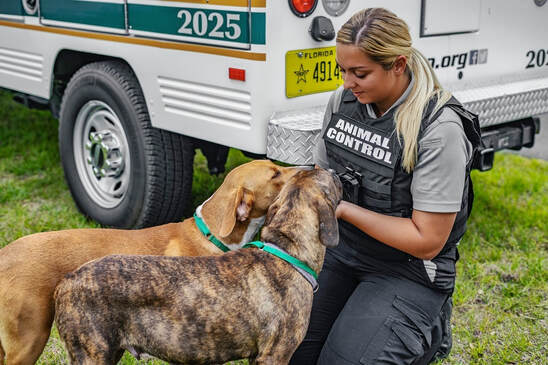



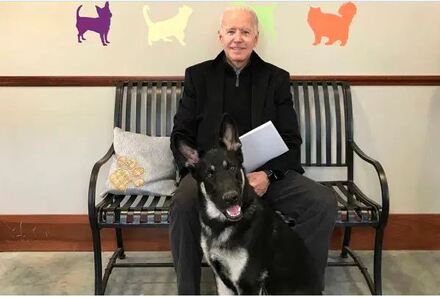
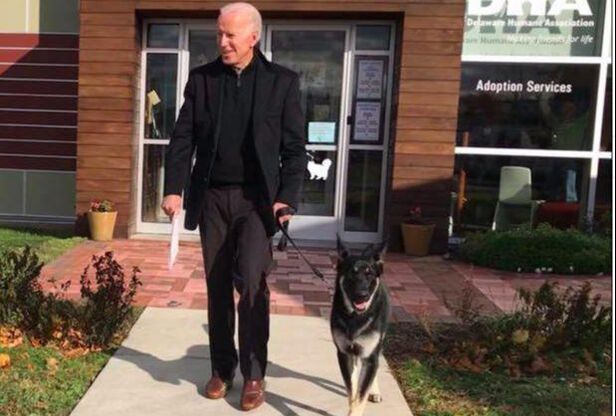
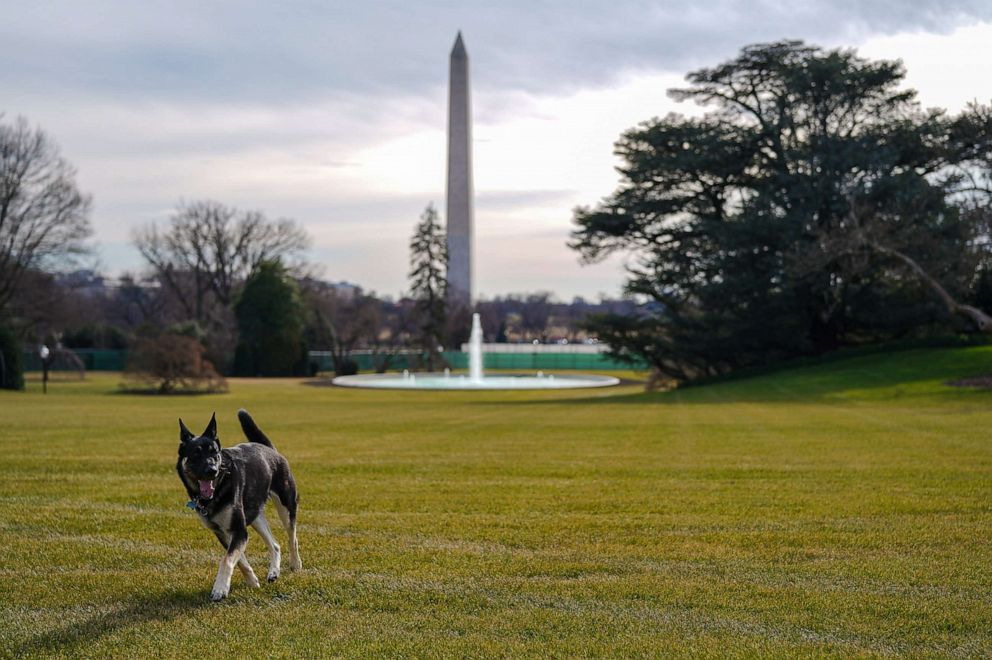
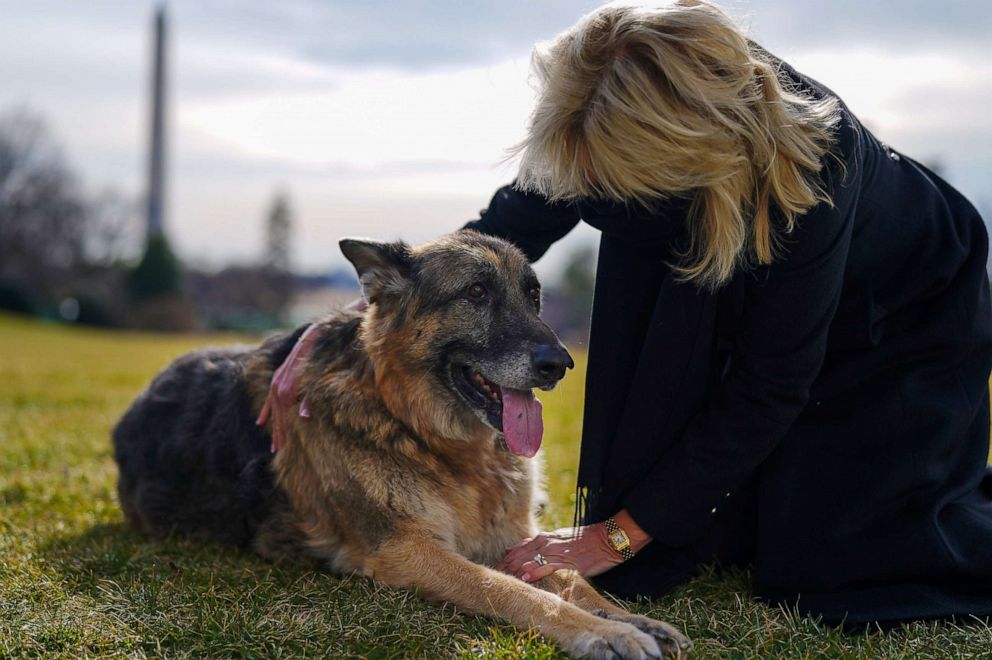
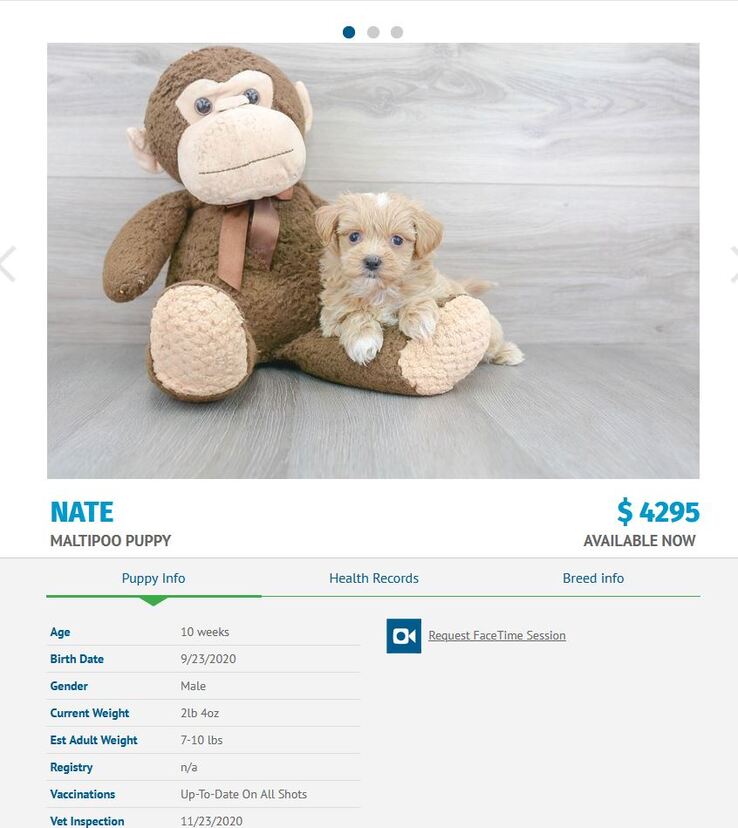
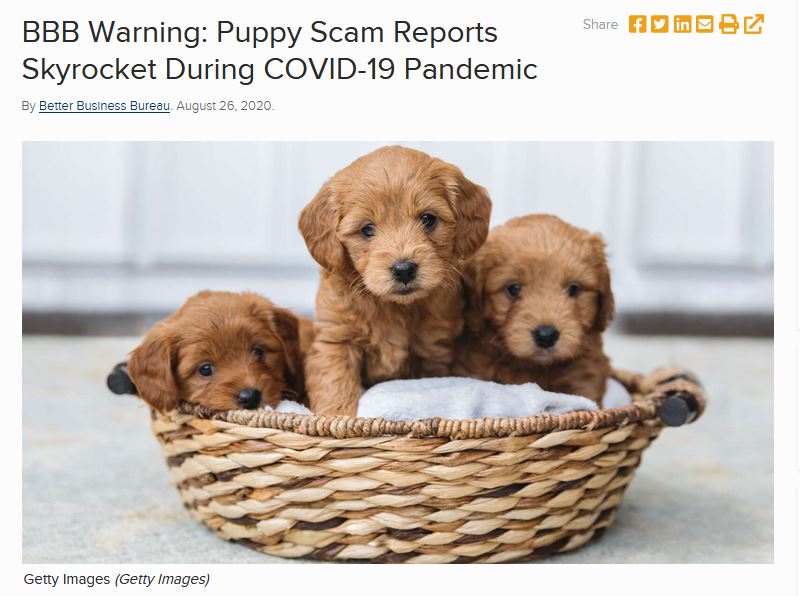
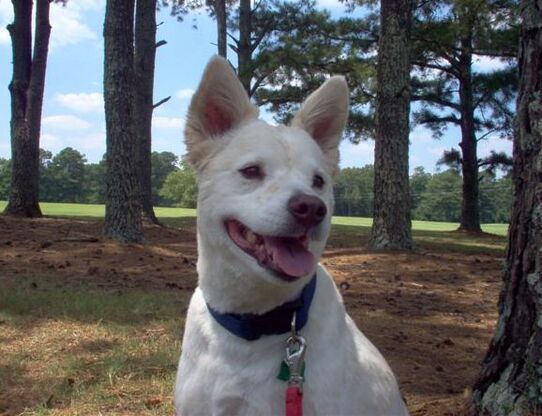

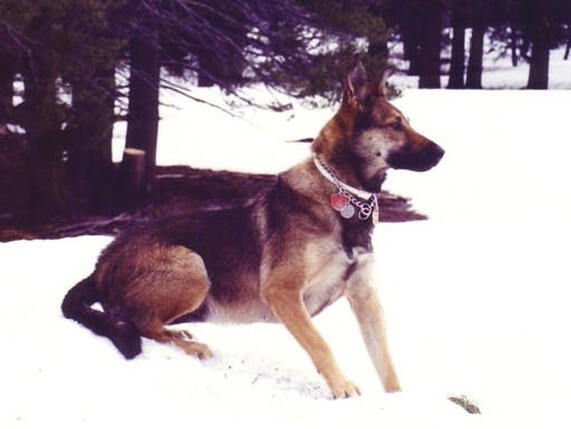
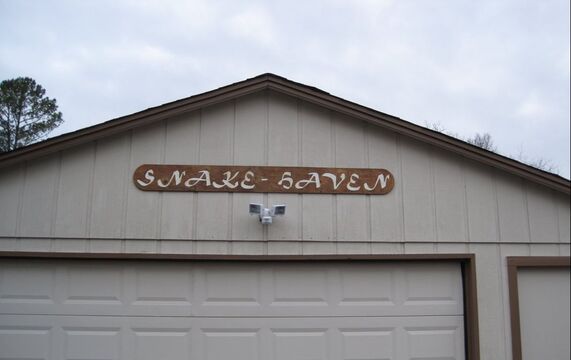

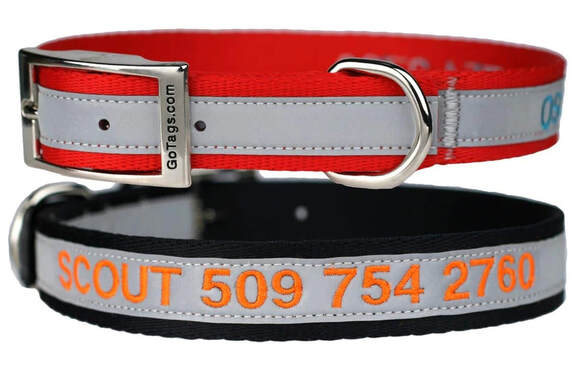

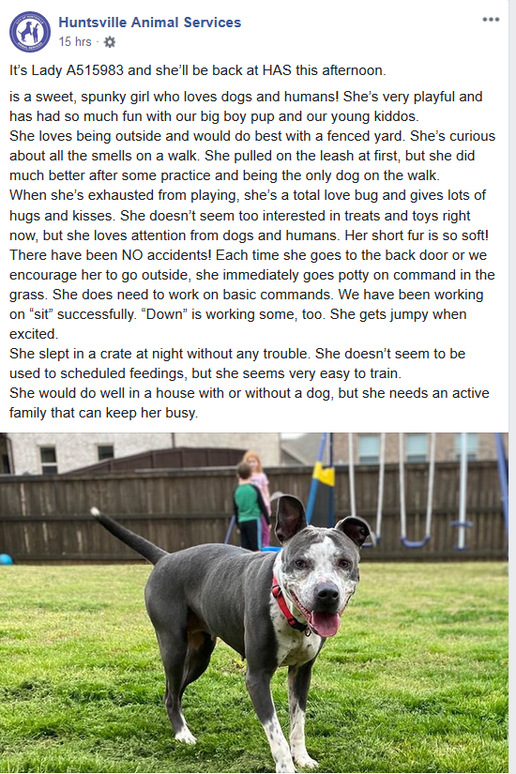

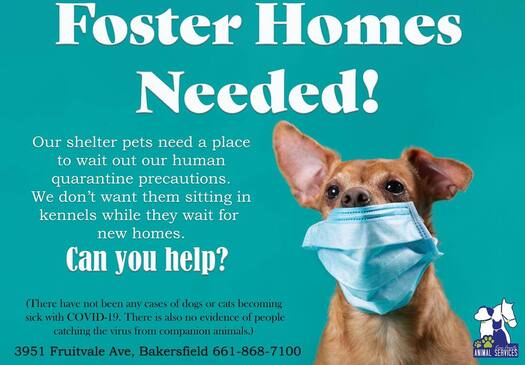
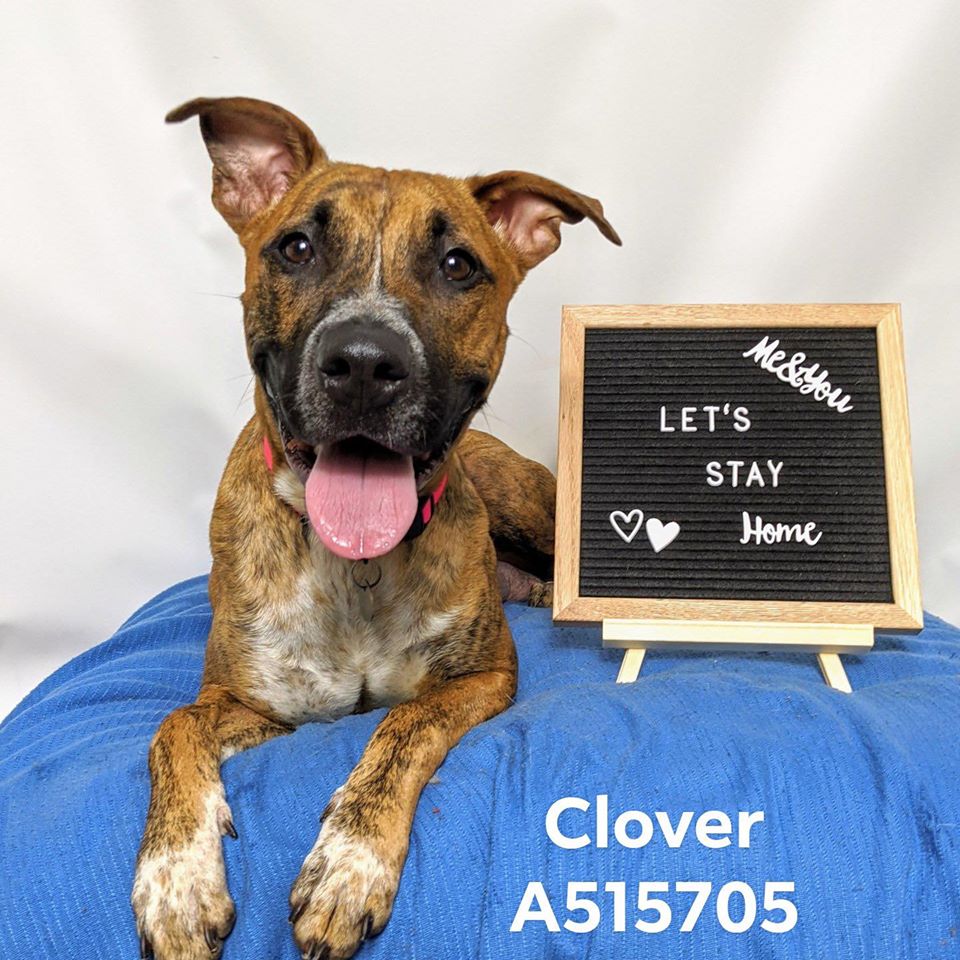

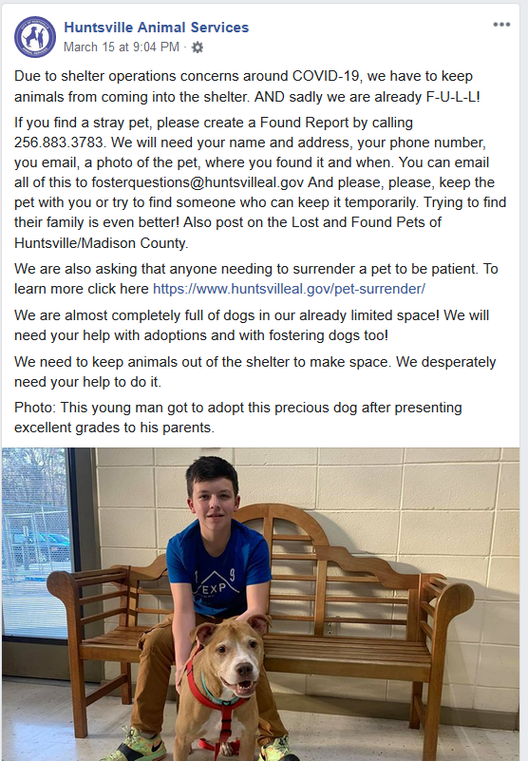


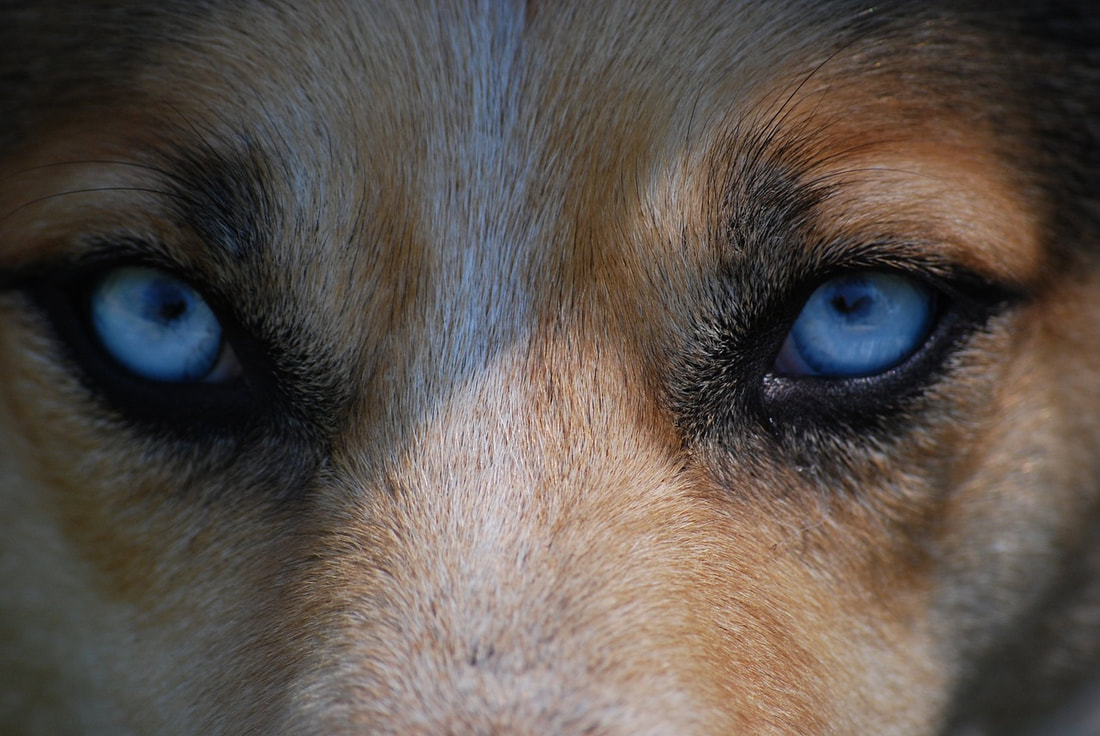
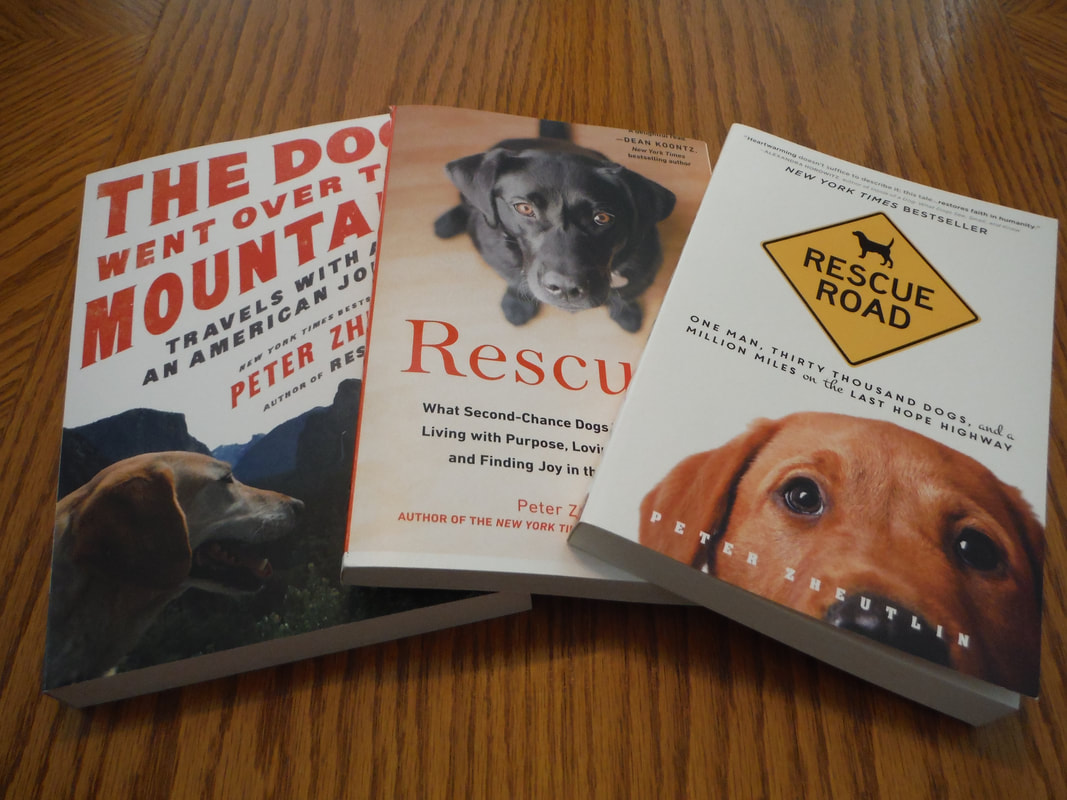

 RSS Feed
RSS Feed